Teachers Create Science Buzz – Science in the Rockies 2007
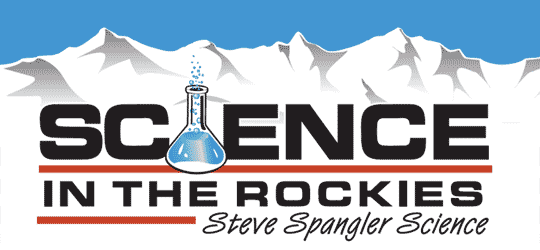
It's been called a"Mr. Wizard-style" training camp for teachers who are looking to add more purpose and piazza to their science lessons. The three-day intensive training called Science in the Rockies is targeted at early childhood through middle school teachers who need creative science integration strategies… who are tired of trying to "squeeze" science into their already packed teaching schedule… and who want to make science even more fun and meaningful in their classroom. 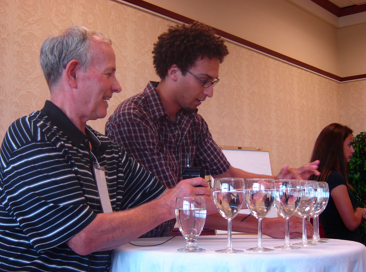 "Our goal was to give teachers the necessary training and tools to do more science in their classrooms in the coming year," according to Steve Spangler, Executive Director of the National Hands-on Science Institute and lead trainer at Science in the Rockies. "The problem is one of time: teachers want to do more science with their students, but many elementary teachers just cannot find the time needed to give students the opportunity to really do science," says Spangler. "Some elementary teachers are forced to put science on the back burner until early Spring when state testing in other curriculum areas is finished. Science education cannot withstand that kind of assault… and this sort of 'boot camp' training is so important to the future of science education."
"Our goal was to give teachers the necessary training and tools to do more science in their classrooms in the coming year," according to Steve Spangler, Executive Director of the National Hands-on Science Institute and lead trainer at Science in the Rockies. "The problem is one of time: teachers want to do more science with their students, but many elementary teachers just cannot find the time needed to give students the opportunity to really do science," says Spangler. "Some elementary teachers are forced to put science on the back burner until early Spring when state testing in other curriculum areas is finished. Science education cannot withstand that kind of assault… and this sort of 'boot camp' training is so important to the future of science education." 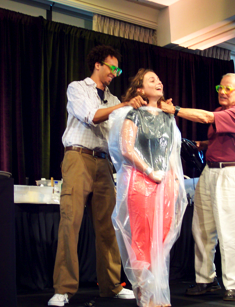 During the three-day training, teachers participated in more than 250 hands-on science experiments and demonstrations aimed at getting students to use the scientific method to solve problems and make their own discoveries. For example, as a way of demonstrating the incredible power of air, instructor Doug Hodous vacuum-packed a willing teacher participant in a giant plastic bag. “Once you’re sealed in a bag from the neck down, and the air is removed, you understand what it feels like to have 14.7 pounds of air pushing on every square inch of your body… and every kid in class wants to be vacuum-packed!” Hodous, who has been teaching at the National Hands-on Science Institute since 1996, encourages teachers to use demonstrations to grab the students’ attention and set the stage for a more hands-on experience that gets students really doing science. Julie Gintzler, children’s literature specialist and Boot Camp instructor, shared many best practices and strategies for connecting science with popular pieces of children’s literature. After reading the children’s classic, Snowy Day, Gintzler showed teachers how to make it snow in their classrooms using a material called a superabsorbent polymer commonly found in baby diapers. Adding water to the powder produced an eruption of faux snow accompanied by many ooohs & ahhhs! “It’s fun to use science to make the story literally come to life. Teachers need to learn how to tap into a child’s natural curiosity to create science learning experiences that promote wonder, discovery and exploration.”
During the three-day training, teachers participated in more than 250 hands-on science experiments and demonstrations aimed at getting students to use the scientific method to solve problems and make their own discoveries. For example, as a way of demonstrating the incredible power of air, instructor Doug Hodous vacuum-packed a willing teacher participant in a giant plastic bag. “Once you’re sealed in a bag from the neck down, and the air is removed, you understand what it feels like to have 14.7 pounds of air pushing on every square inch of your body… and every kid in class wants to be vacuum-packed!” Hodous, who has been teaching at the National Hands-on Science Institute since 1996, encourages teachers to use demonstrations to grab the students’ attention and set the stage for a more hands-on experience that gets students really doing science. Julie Gintzler, children’s literature specialist and Boot Camp instructor, shared many best practices and strategies for connecting science with popular pieces of children’s literature. After reading the children’s classic, Snowy Day, Gintzler showed teachers how to make it snow in their classrooms using a material called a superabsorbent polymer commonly found in baby diapers. Adding water to the powder produced an eruption of faux snow accompanied by many ooohs & ahhhs! “It’s fun to use science to make the story literally come to life. Teachers need to learn how to tap into a child’s natural curiosity to create science learning experiences that promote wonder, discovery and exploration.” 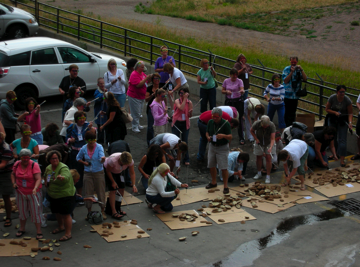 "Some of the teaching strategies are far from conventional," said Spangler as he put on his safety glasses. Little did the participants realize that they would be involved in an all out potato plug war, in the back lot of the hotel, as a way to better illustrate the concept of Boyle's Law. Each person was given safety glasses, a plastic tube, a plunger and a handful of potatoes as they made their way outside. Powered only by air pressure, the two waring factions of teachers shot potato plugs at one another admist screams of excitement. "I can honestly say that I've never participated in a teacher workshop where we laughed and learned this much. The potato plug war was truly an unforgettable experience," said Julie Freeman, a second grade teacher from Illinois. “Teaching science is not all fun and games,” Spangler explained at the outset of the three-day training. "If we continue to allow our schools, the
"Some of the teaching strategies are far from conventional," said Spangler as he put on his safety glasses. Little did the participants realize that they would be involved in an all out potato plug war, in the back lot of the hotel, as a way to better illustrate the concept of Boyle's Law. Each person was given safety glasses, a plastic tube, a plunger and a handful of potatoes as they made their way outside. Powered only by air pressure, the two waring factions of teachers shot potato plugs at one another admist screams of excitement. "I can honestly say that I've never participated in a teacher workshop where we laughed and learned this much. The potato plug war was truly an unforgettable experience," said Julie Freeman, a second grade teacher from Illinois. “Teaching science is not all fun and games,” Spangler explained at the outset of the three-day training. "If we continue to allow our schools, the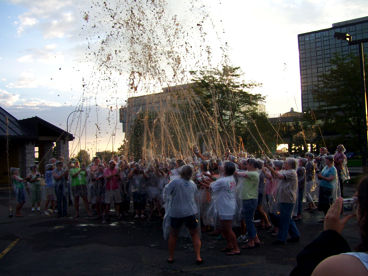 administrators and teachers to put science on the back burner, we will move one step closer to making science education an extra-curricular activity.” In the opening session, Steve shared his thoughts and perspective on the “hands-on” approach to learning. “We all learned that a hands-on approach is better than the more traditional sit-and-listen lecture style, but is that true? Just because students have stuff in their hands doesn’t mean that they’re learning. The secret is engagement instead of involvement. Students want to be engaged and to be challenged to make their own discoveries,” Spangler said as a way to set the stage for a training experience that would be more than a make-and-take weekend.
administrators and teachers to put science on the back burner, we will move one step closer to making science education an extra-curricular activity.” In the opening session, Steve shared his thoughts and perspective on the “hands-on” approach to learning. “We all learned that a hands-on approach is better than the more traditional sit-and-listen lecture style, but is that true? Just because students have stuff in their hands doesn’t mean that they’re learning. The secret is engagement instead of involvement. Students want to be engaged and to be challenged to make their own discoveries,” Spangler said as a way to set the stage for a training experience that would be more than a make-and-take weekend.




Can you please explain how the potato plug is made and how it works?
It’s great to see there’s teachers with just as much (or even more) enthusiasm for Science as there ever was, just a pity there’s so little time to teach it in school. This training is such an excellent experience – your team does a great job at providing teachers with ideas to integrate science into other teaching. I really missed being there this year, but like all the movies, there should be a sequel and I hope you’ll be putting on a Science In The Rockies 2 next year!!
Here is the explanation about the potato gun: https://www.stevespanglerscience.com/experiment/00000147
I can’t wait to use the vacuum bag experiment. Best of all, most of the students are small enough to fit into our extra large garbage sacks — after I first get permission from our custodian to raid the janitorial closet, again. Now, which end of the kid goes into the bag first??? : )
Steve, I have gotten the best ideas from you and I’m so glad I stumbled across your pod cast about three years ago.
Thanks so much Bart. And good luck vacuuming those kids up.
Steve – The conference last week was the most amazing educational experience I have ever had! My boxes arrived last night and I can’t wait to take to school and redo our science room. I was watching a channel 9 video from the conference last year. One of the experiments used a plastic trash can (spackle bucket?) with something stretched over the open end. A teacher hit this clear material with a stick that had a ball on the end to create air flow that knocked a paper cup off of another teacher’s head? Obviously, I want to know more about that one! Would you please tell me how to make it? Many thanks.
Petie… Thanks for your kind words about the conference. It was great to have you at Science in the Rockies. The demo you’re asking about is called an Air Blaster – Smoke Ring Launch. After watching the video, you’ll head off to the hardware store! See you in Alaska for Science in the Rockies (oops… I mean Science at Sea) next year.
“Science in the Rockies” was an unforgettable experience! My two boys are experimenting with all of the fun new Science “stuff”! Steve and his staff are fantastic and I can’t wait to share all of the new things with my new students. How lucky are we to teach the greatest subject on Earth?? Thanks again Steve and staff!
The conference was outstanding! I have already shared many of the ideas with fellow teachers trying to set up classrooms. They have laughed at my excitement and gladly taken the experiments that better fit their curriculum. I had to redo my cabinets to fit all the new supplies – THANKS! Our principal loved the potato launcher – I took it to school with potatoes and she was having fun in the parking lot. We already have plans for me to share things at our first staff meeting (including “setting up” one of our teachers with the air bags). The principal wants others to go to the conference next year too – of course I’ll NEED to go on the Alaskan trip:) Again, thank you to ALL the great staff for a fun and professional conference!
I haven’t stopped talking about what I learned since I returned to Missouri. Yesterday at our district convocation, I connected with a high school chemistry teacher (I teach kindergarten). I’m excited to explore the possibilities! I presented the “Halloween” type activities to my team and we’ve decided that we’ll do science stations in our rooms for our October party. We’ll get parents to teach the stations and our four classes will move from room to room. I can’t wait to start school and share the lessons with my students. Thanks for a wonderful 3 days!!
By the way, I already have an Alaskan cruise planned for next summer with friends, but please let me know when you are going so I can make sure our cruise boat is NOT in the same area. You all will be having way too much fun and it will make us jealous!!:) It would probably also scare some of the passengers if we were to go by your ship with things exploding, bubbling, and steaming!!
Be warned, there are going to be many, many posts exclaiming how wonderful this conference is and how it is definitely worth your time to go and it’s 110% true! Not only will your head and suitcase explode with knowledge and materials, you’ll also leave with a great feeling knowing you met some of the most interesting and nicest people you’ll ever come across. Never have I been to a conference where people are so accomodating and friendly! I’m taking the positive vibes and all the neat science stuff with me to use in my classroom and of course my life. Keep that great science spirit alive!
My fifth graders were SO EXCITED when they saw all the new Science materials I brought home from “Science in the Rockies”. We go to the first grade classroom once a week and have a time of reading and mentoring. We shared the story, “Put Me In The Zoo” with the “magic red thumb”. We had the first graders “hooked” immediately. They can’t wait for us to come back to their classroom and honestly the fifth graders can’t wait to go. Thank you for new ideas, materials, and enthusiasm for teaching!!!!!!!!!!!!!!
The “Science in the Rockies” workshop was awesome, and it was a lot of fun! I had a great time and learned so much. I have been showing my children all of the fun experiments, and I can’t wait until the fall to show it to my students! Thanks for everything!
I just finished sharing all my new knowledge and stuff with my co-workers at the pre-school where I work. So now we are all excited to start introducing science concepts to our kid. Thanks again for a wonderful experience. I can not stop talking about how much fun I had and how impressed I was with your organization and wonderful staff. I especially liked the connections with literature and science. Keep up the good work.
I am still on cloud 9 about the conference. I shared “almost”? all of the experiments with my team preschool-teachers (I have to save something up my sleeve to dazzle them at another training!). The literacy connection is very useful for us in the early childhood education field; the combination of science and literacy helps us achieve new NAEYC curriculum standards.
Thanks again for a great experience!
This sounds fantastic. Where can I find information about the next training in Alaska?
We are so excited about Science at Sea! We are currently working on the details and will get more information out as soon as it becomes available.
Hi Steve,
This sounds like fun. I was wondering if we could join you some day. When do you think you will go to Alaska?
When is your next workshop? Pam Mendoza
Hi Pam. Here’s a complete list of upcoming Bootcamps this fall:
Orlando, Florida – Sept. 26, 2007
Tampa Bay, Florida – Sept. 27, 2007
Cape Girardeau, Missouri – Oct 5, 2007
San Francisco, California – Oct. 10, 2007
Seattle, Washington – Oct. 11, 2007
Houston, Texas – Oct. 24, 2007
Dallas, Texas – Oct. 25, 2007
Chicago, Illinois – Nov. 6, 2007
For more information go to – https://www.stevespanglerscience.com/teacher_training/2007-boot-camp-tour/
I teach prechool and I will use some of these experiments with my children. Will you ever be coming to ny state? Hopefully upstate ny?
We (there were five of us from the gifted program for middle school science education in Houston County, Georgia) are ALL using the many incredible hands-on labs and “hooks” that you and your staff shared at Science in the Rockies. After 27 years of teaching and attending workshops, all the training I’ve received pales in comparison to the extraordinary workshop that you and your staff conducted.
I attended Science in the Rockies in the summer of 2007. It was awesome! Yesterday, for Halloween, we made worms with my class and the other third grade at my school. The kids loved it. We had 42 kids in one room, under control, and loving Science. Most of the kids poured out the water and took their worms home in the cup to see what would happen. I even talked to some parents last night trick or treating with their kids and they were all enthused. It was great fun and perfect for Halloween Science. (I did use 2 ½ packages of worm activator and ¾ of a bottle of worm goo for 42 kids.) – Teri
This looks great. Are you ever coming to Missouri?
Pamela Mendoza did you ever work at Weber Institute?